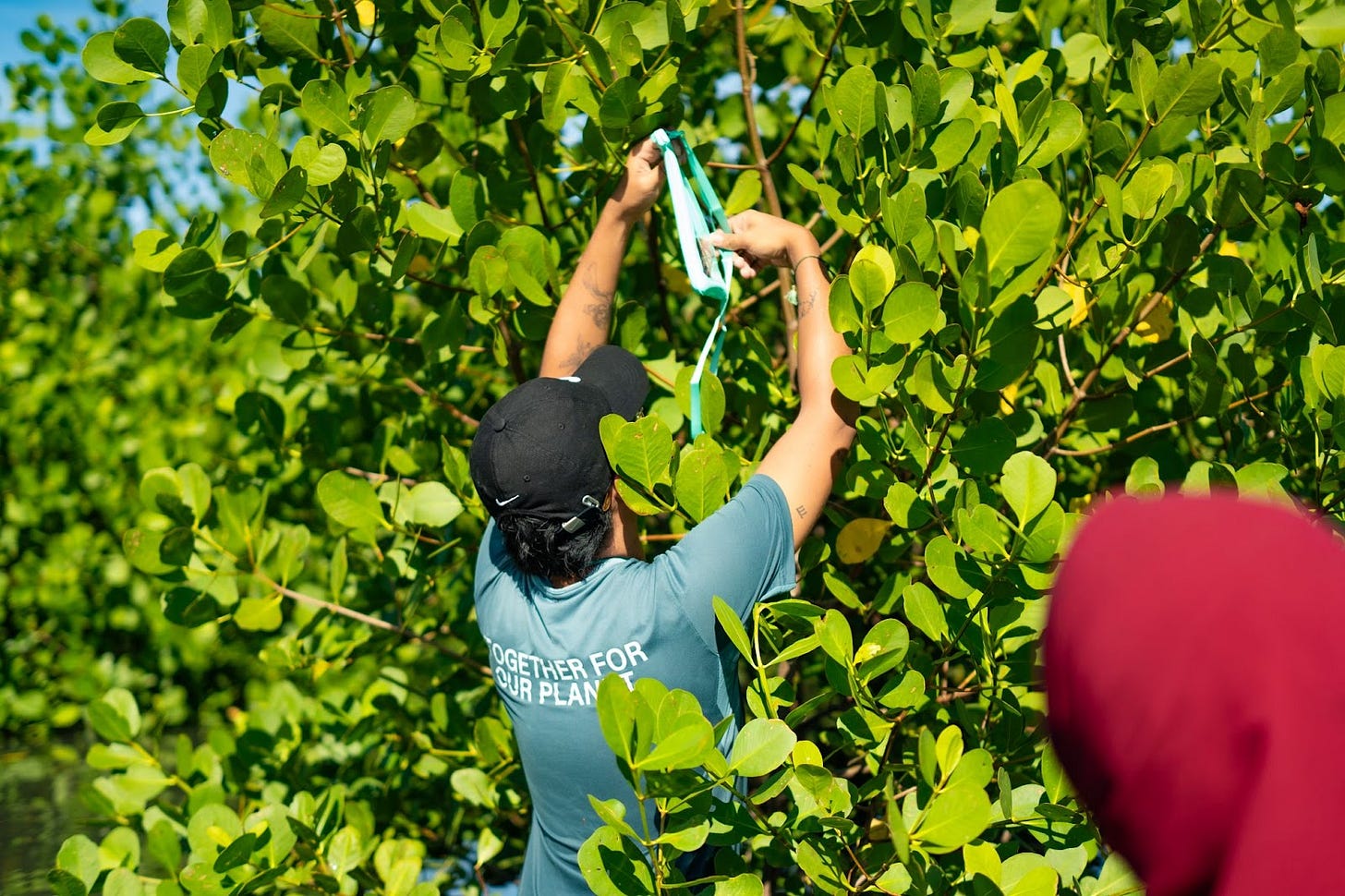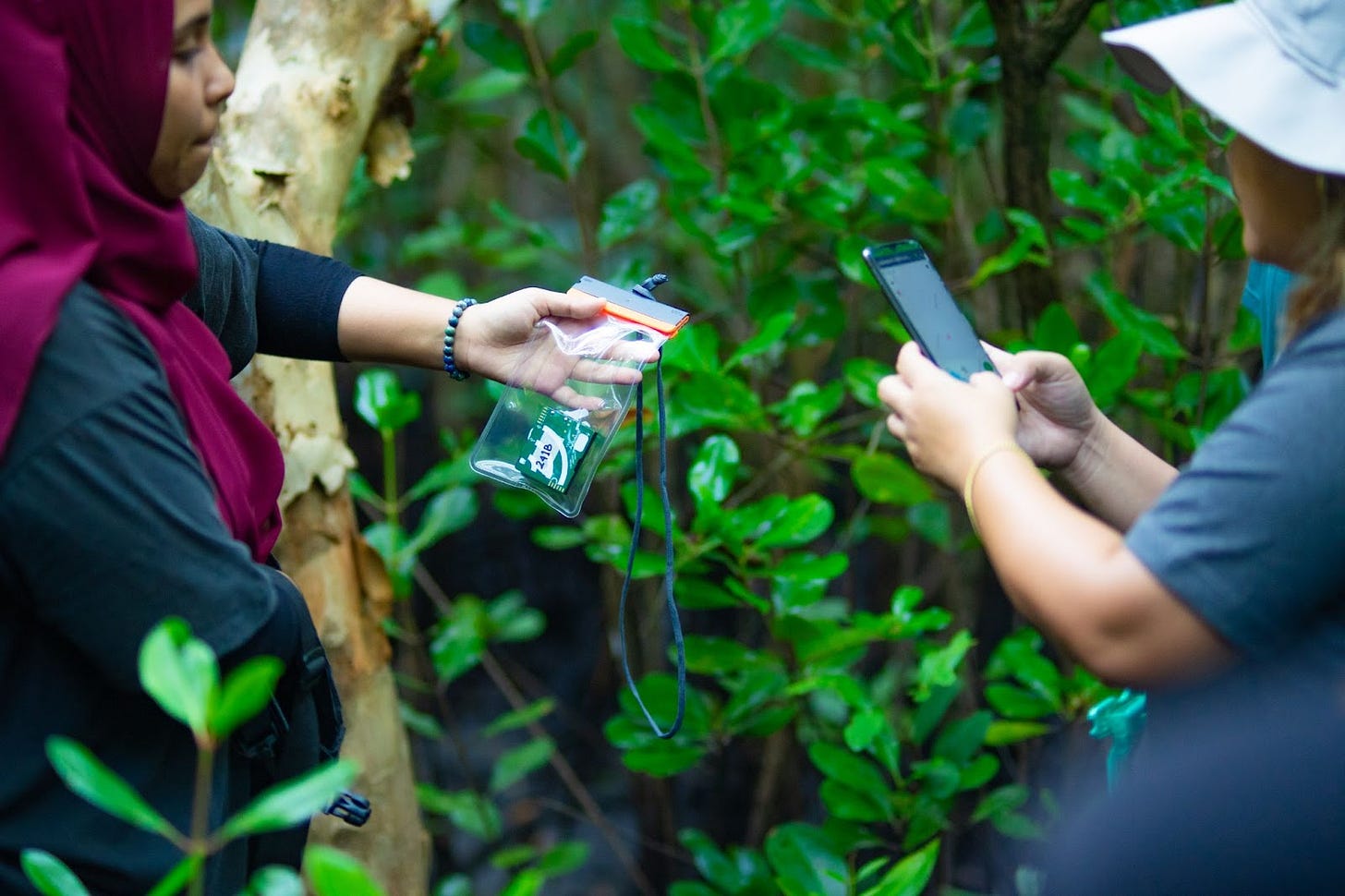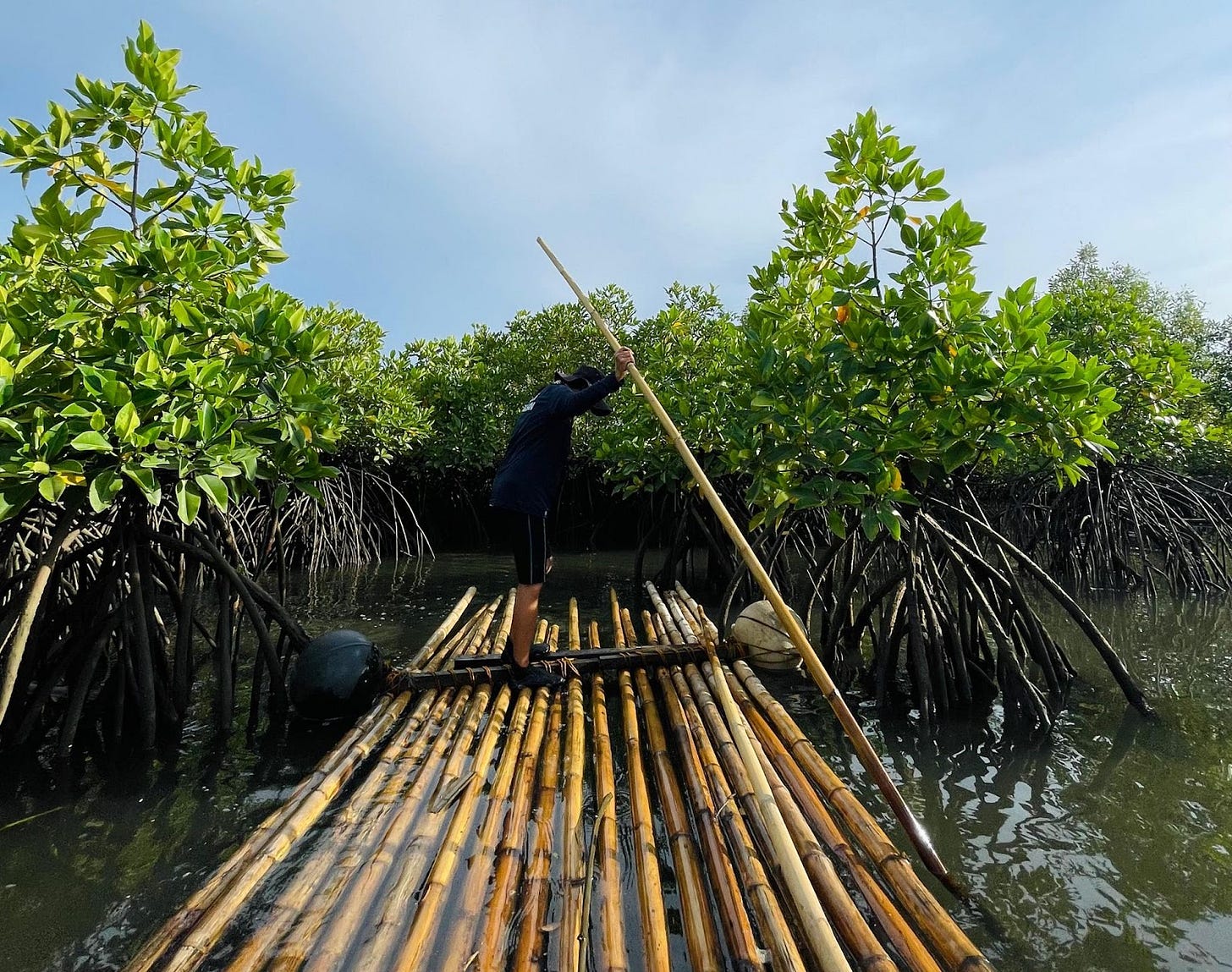Deploying the AudioMoth with Oceanus Conservation in Cagwait, Philippines: A Journey of Science and Community Collaboration
By Nurfatin Hamzah, Camille Rivera, and Emmanuel Cababarros
Bioacoustic data is a powerful tool for monitoring biodiversity and assessing ecosystem health. By capturing the sounds of wildlife—whether it’s the songs of birds or the calls of insects and bats—it offers invaluable insights into the species present in an area and their interactions within the environment. For those working to protect and restore delicate ecosystems, it is an essential resource.
At GainForest, we use the AudioMoth, a small, efficient sound recorder, to collect this data. With its ability to record everything from high-pitched bird calls to low-frequency animal sounds, the AudioMoth helps us gather important bioacoustic data that can be analyzed using artificial intelligence (AI). The combination of AI and bioacoustics allows for quicker identification of species and patterns, giving us a clearer picture of the health of ecosystems like the one in Cagwait, Philippines.
AudioMoth deployment in the mangrove forest of Cagwait, Philippines
Recently, we traveled to Cagwait, a key project site of our trusted partner, Oceanus Conservation. Our journey took us from Manila to Butuan (a 1 hour and 45 minute flight), followed by a scenic 3-hour van ride with the Oceanus Conservation team. The trip felt less like a formal mission and more like reconnecting with old friends, as we looked forward to collaborating once again with the passionate team. Together, we were excited to deploy the AudioMoth, knowing it would play a crucial role in our joint effort to monitor and protect the biodiversity of the region.
Co-creating a Scientific Question
Upon arriving in Cagwait, the Oceanus Conservation team took us to several restoration and conservation sites, where we also met with local fisherfolk communities involved in mangrove restoration. These visits deepened our understanding of the challenges they face and the crucial role of community efforts.
In addition to visiting the sites, we also had the chance to meet with the mayor of Cagwait. This meeting helped us gain insight into the governance dynamics at play, and how Oceanus Conservation fits into the broader efforts to restore and protect the mangrove ecosystems here.
Through these discussions, we co-created a research question that would guide our efforts: how can we compare biodiversity between restored and unrestored areas? This question became central to our collaboration, blending local knowledge with scientific inquiry to ensure our data collection would be both relevant and impactful for local conservation efforts.
Capacity Building and Collaborative AudioMoth Deployment with Oceanus Conservation
During our time with Oceanus Conservation, we provided hands-on training on deploying and configuring AudioMoths, covering crucial pre-deployment steps. The Oceanus Conservation team also shared their insights on adapting the devices to local conditions, ensuring the data collected would be relevant to advancing their conservation agenda.
We also introduced the team to Arbimon, a tool for data management and visualization, which will allow them to independently manage the devices and the data collected. With Arbimon, we can configure the AudioMoths, mark their deployment locations, and easily upload and visualize data.
Training session led by GainForest on the pre-deployment and configuration steps of the AudioMoth with the Oceanus Conservation team
To make the deployment of AudioMoths more effective, we shared some practical tips:
Use a waterproof case, like one for snorkeling, to protect your AudioMoth.
If possible, use a camouflage case to help it blend in with the surroundings.
Secure the case to a tree with a thin rope.
Place it in a location that’s not easily spotted by people.
In mangroves, ensure it’s positioned high enough to avoid submersion during high tides.
We selected deployment locations by combining our scientific goals with local insights, focusing on both restored and unrestored sites. Some of these mangrove areas were once abandoned fishponds, and transforming them into vital habitats is a niched challenge that Oceanus Conservation is actively addressing.
Deployment of the AudioMoth in the mangrove forest, placed inside a waterproof case before being secured to a tree
While we aimed to visit during low tide, we only managed to do so for the first few sites early in the morning. By the time we reached the last few locations, the tide had risen, but we were determined to continue with the deployment. A memorable moment occurred when a local fisherwoman kindly offered us a ride on her bamboo raft. This kind gesture allowed us to access areas that would have been difficult otherwise and showcasing the strong community spirit we encountered throughout our journey.
During high tide, a fisherwoman generously offered us a ride on her bamboo raft to assist with the AudioMoth deployment.
Engaging the Local Fisherfolk Communities
While visiting the mangrove tree nurseries, we learned from the fisherfolk communities that mangrove restoration has become an alternative livelihood for them. While fishing remains their main source of income, many have taken up restoration work as an additional way to support their families and contribute to the conservation of their environment.
Members of the fisherfolk community planting mangrove saplings, embracing an alternative livelihood alongside traditional and commercial fishing
A few days later, we met the fisherfolk again for the AudioMoth deployment. Oceanus Conservation introduced us and took the lead in explaining the purpose and use of the AudioMoth in their local language. Together, we used the Arbimon Companion App to set up the device at one of the sites, and some of the fisherfolk actively participated, trying out the configuration and deployment themselves.
This collaboration highlighted how Oceanus Conservation made technology more accessible and meaningful to the local community. Acting as a bridge, Oceanus Conservation connected advanced tools with local nature stewards, ensuring that the fisherfolk grasped the purpose behind these innovations. By integrating technology with the community's profound understanding of their environment, Oceanus Conservation reinforced the fisherfolk's active role in conservation efforts.
Project Lead from Oceanus Conservation explaining the Arbimon Companion App for AudioMoth deployment to the fisherfolk in their local language
Our Reflections: Collaborative Efforts in Mangrove Restoration
In conclusion, our time in Cagwait highlighted the importance of collaboration in local mangrove conservation efforts:
Oceanus Conservation connected the technology to local realities, ensuring the tools were relevant to the community's needs and aligned with the current environmental conditions and governance structures.
GainForest provided technical expertise, tools, and training to support this work.
The fisherfolk's willingness to learn and engage with these innovations enriched our approach.
Together, these partnerships strengthen our commitment to addressing environmental challenges and supporting the community’s efforts in restoring and protecting mangrove habitats.







